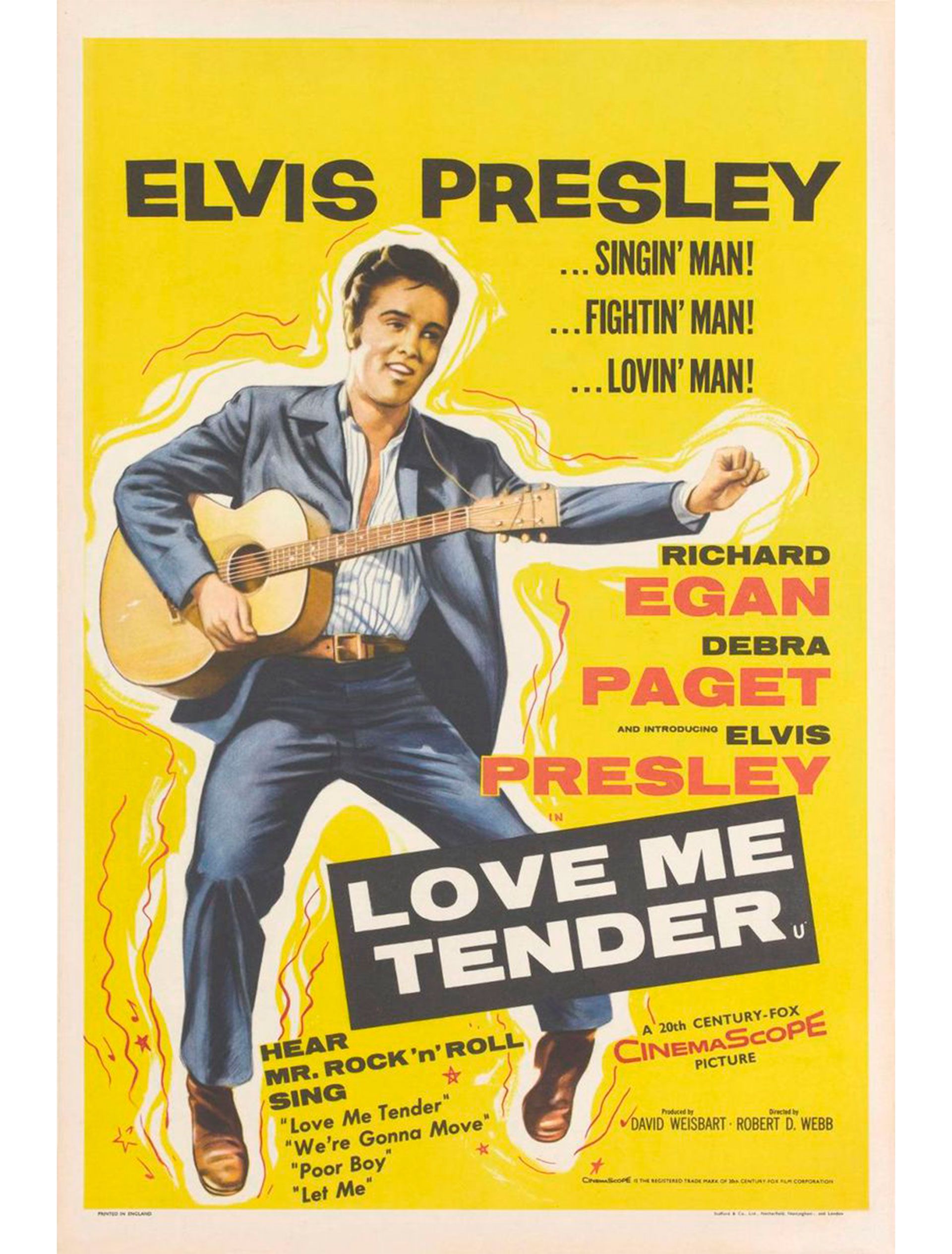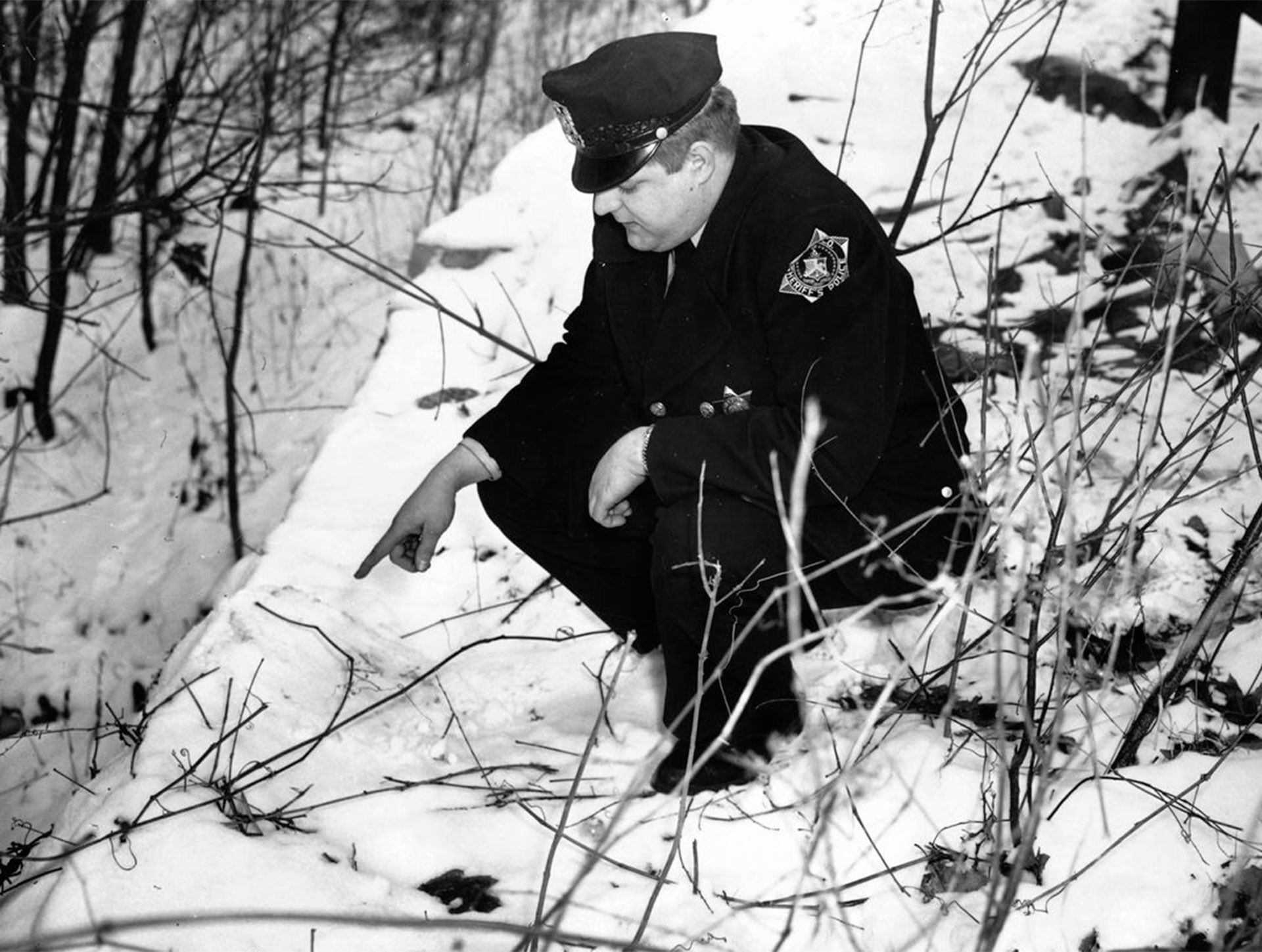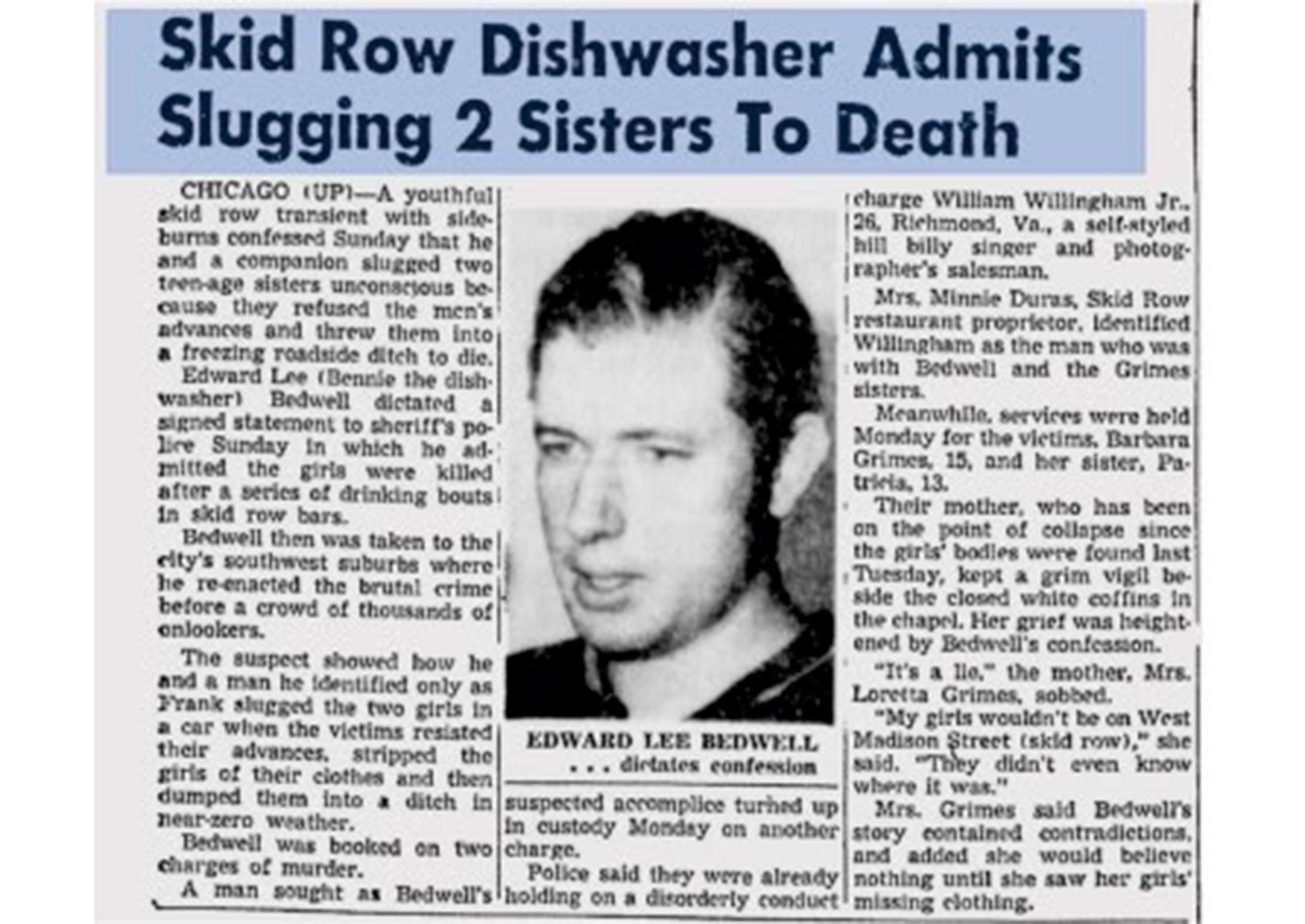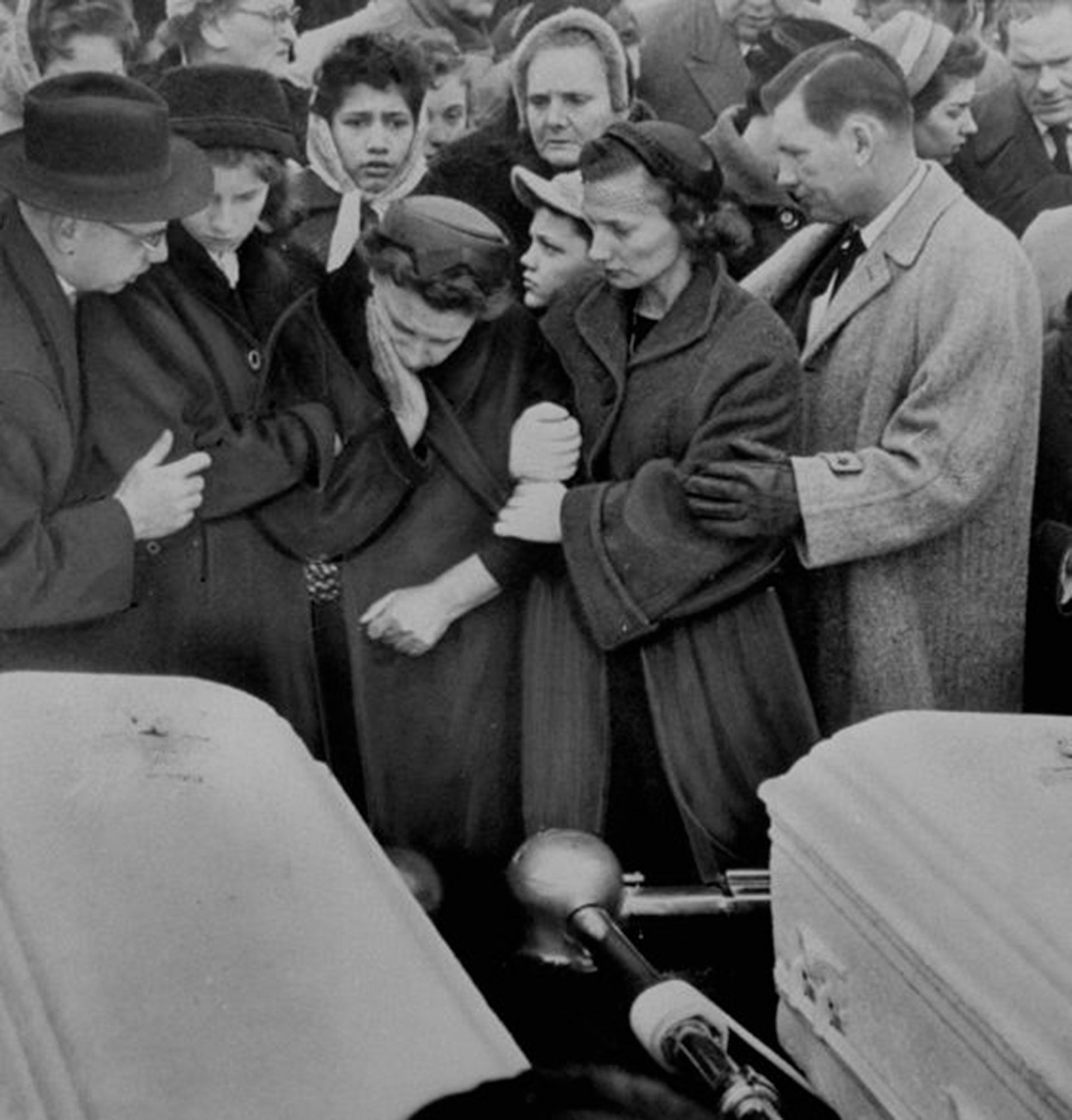
For several days, Barbara and Patricia Grimes had been asking their mother to let them go to the movies to once again see Love Me Tender, the new film by their undisputed idol, Elvis Presley. Loretta didn't like the idea. On the one hand, the finances of a lower middle class family, of separated parents with seven children, did not give much luxury; on the other, he did not like it when his daughters, aged 15 and 13, left late during the cold Chicago winter and returned at night.
On December 28, 1956, he relented and repented for the rest of his days. Loretta gave two dollars and fifty cents to Barbara, the oldest. It was enough for bus tickets to the Brighton Park Theatre, where they would show the film, pay the tickets and, perhaps, buy some goodies. At the last minute he gave him fifty cents more, in case they wanted to stay for the next show. The girls had already seen the Elvis movie seven times, but they always enjoyed it as if it were the first.
At half past seven in the afternoon he sent them away at the door. Before, she asked Barbara to take care of her little sister and to return before midnight, not to be entertained around. It was Friday and the next day the girls didn't have school.
It was the last time he saw them alive. That same night she would begin to live a nightmare that began with the disappearance of the girls, continued with the discovery of their naked bodies almost a month later, overwhelmed her with the sensationalist versions of the press and the parade of alleged perpetrators, and ended up consuming her without being able to know who or who had abducted them and murdered.
The girls don't come back
Loretta Grimes got worried when the girls didn't arrive at 12 at night. I had calculated if they stayed for the second show they would be home a few minutes before midnight. He asked 17-year-old Joey to go with his 13-year-old sister Teresa to the bus stop to wait for them.
The boys saw three transports pass without their sisters coming down and returned to the house. Loretta didn't wait another minute. He went to the nearest police station, in McKinley Park, and reported the disappearance of Barbara and Patricia.
Because of the age of the girls, the police did not wait for 48 hours of rigor to start looking for them. Maybe they'd run away from home or go to sleep at a friend's house without telling their mother, but it was unlikely. That same night, two patrolmen repeatedly walked the road from the house to the cinema while other policemen interviewed the bus drivers. They didn't find them.

They had the first concrete information the next morning, when Loretta called, one by one, her daughters' schoolmates. Dorothy Weinert, who was in the same grade as Patricia, told her that she had seen them at the movies. Later, the girl explained to the detectives that the Grimes sisters had sat in a row ahead and talked for a while. After the first show ended, Dorothy returned home, but Patricia and Barbara told her that they would stay and watch the film again.
The employee at the Brighton Park Theatre ticket office did not remember them when she saw the photos the police showed her, but the newsstand manager told them that the girls had bought a popcorn cartridge before entering the second show. He didn't see them leave the movies, nor did he talk to anyone.
A desperate search
The Cook County Police Department began an intensive search, involving hundreds of officers, and formed a special task force to centralize and process all the clues that appeared.
They interrogated door-to-door neighbors from the cinema and the entire bus route — more than a kilometre and a half — that they should have taken to return home. The photos of the two girls were affixed to all the shops and lighting poles in the area and more than 15,000 flyers were distributed among passers-by. The church that Loretta and her children attended took up a collection and offered a $1,000 reward for any information that would allow them to be found.
After a few days, it was decided to dredge the city's canals, without any result.
For the first week there was virtually no news, until a teenager said he saw them leave the cinema and get into a car, probably a Mercury, driven by a young man much like Elvis Presley.
That testimony, which was later corroborated by two other boys, led nowhere. Instead, it unleashed a storm of versions about the girls.
Elvis' order
The unsuccessful police search and the version of the Elvis-like driver who would have lifted the girls sparked a wave of rumors that diverted public attention.
The media began to question Patricia and Barbara's behavior. It was said that they had run away from home to attend an Elvis Presley recital in Nashville, Tennessee, that they were in a community of young people who imitated the lifestyle that the singer showed in his films, and even that they were with Elvis, hiding in his Graceland mansion.

Loretta did not believe that the girls had voluntarily left her home, but the lack of search results and the news that echoed those versions made her desperate. He appealed on radio and television: “If someone holds them, please let the girls call me,” he begged. But he also said, “If they left, I will forgive them from the bottom of my heart.”
When he heard about the disappearance of the girls and the rumor that they might be hiding in Graceland, Elvis Presley's press office released a statement denying it strictly and the singer himself took advantage of one of his radio presentations to address Barbara and Patricia:
“If you are good fans of mine,” the singer said in front of the microphone, “go home and ease your mother's worry.”
Two naked corpses
On January 22, 1957 — more than three weeks after the girls disappeared — the temperature rose in Chicago and the snow began to melt. Leonard Prescott, a construction worker, got off his job, got into the car and drove down a back road called German Church Road to find his wife, Marie. He was at it when, behind a guard rail he thought he saw two mannequins peeking out of the snow. Since he was in a hurry he didn't stop, but on the way back, they decided to go and see what “those flesh-colored things” were that he had seen.

The first to arrive was Marie and Leonard must have held her because she passed out. Only then did he see that the “mannequins” were actually two naked and frozen bodies.
The bodies of the little sisters Grimes lay on flat ground covered with snow, just behind the guard rail. Barbara was lying on her left side, with her legs slightly bent towards her torso. Patricia was on her back, with her body above her sister's head, and her own head turned to the right.
The police closed the area and went to look for Joseph, the girls' father, to identify them.
“It's them,” he said and they had to grab him so he wouldn't throw himself on the bodies.
One mistake after another
From then on, the police did everything wrong. While they were moving the bodies to the morgue, some 160 people, including agents and volunteers, went around the area looking for evidence. If there was anything that could identify the killer, they destroyed him.
The autopsy turned into a pitched battle between forensics, who did not agree on the date and the causes of the deaths. The most likely thing, some said, is that they would have died in the early hours of December 29; for others, five days later.

Toxicology reports determined that the girls had not used alcohol or drugs. No clothes were found at the crime scene and the bodies were clean, as if they had been washed.
Everyone agreed that Barbara had had sex a few days before death, although they could not define whether forced or not. Two sides were formed there again: some wanted to put that information in the report while others preferred not to, because of the girl's “good memory”.
There were wounds on the bodies, but none seemed fatal. They ended up agreeing to define deaths as “murders” but what was unusual was the cause: “Secondary shock due to hypothermia”. I mean, for forensics, she was frozen to death.
One of the experts refused to sign the report. For the head of Cook's Forensic Office, Harry Glos, they had been beaten to death. He gave a press conference to establish a position and there said that there were “numerous signs of violence on the faces of girls”, which could not be attributed to the work of rats on corpses, as the report said. He also claimed that the two girls had suffered “repeated sexual assaults” for several days.
After that press conference, Glos was left without a job.
In search of culprits
The case became a stigma for the Chicago police. The media accused her of being inefficient and the Grimes family complained about the findings of the autopsy and the investigation that was not proceeding.
They were to find culprits and went on the hunt for suspects.
The first to fall was Edward Lee “Bennie'' Bedwell, a 21-year-old homeless man suspected because of his resemblance to Elvis Presley — in 1957 there were tens of thousands of young people who dressed and combed like the singer of the moment — and the erratic statement of a restaurant owner who said he had seen him with the girls. Bennie confessed everything the police wanted, but when they asked him for details his version of events was delusional. They released him.

The second suspect was Max Fleig, a 17-year-old boy who also confessed to kidnapping and killing the two girls. He agreed, although it was illegal because he was a minor, to be tested with the lie detector. He didn't happen, he was lying.
Silas Jayne was arrested because he owned a stable where three years earlier two murdered children had appeared. It had nothing to do with the previous crime and it had nothing to do with that of the Grimes sisters. His alibi was confirmed by more than ten people.
Five months after the murder of Barbara and Patricia, the investigation went from one frustration to another. Until on May 27, the girls' mother received a phone call.
I kidnapped them, stripped them and killed them. I know something about one of your daughters that no one else knows, not even the police. The youngest girl's toes were crossed on her toes—she heard a man's voice say that she laughed before cutting.
It was true and the police had not leaked that data.
It was the last clue. The investigation into the disappearance and deaths of Barbara and Patricia Grimes remained open, but for almost sixty years it did not contribute anything else.
The real culprit?
Detective Raymond Johnson of the West Chicago Police had always wanted to write a book. He retired from service in 2011 and began to review old cases in the city until he ran into that of the Grimes sisters.
He was attracted to those never-resolved deaths and began to investigate them. He soon found a fact that the city police had not taken into account and that could lead to the discovery of the murderer's identity.
A year after the death of Patricia and Barbara, a man named Charles Leroy Melquist was arrested for the murder of Bonnie Leigh Scott, a 15-year-old girl, whose body was decapitated two months after she was kidnapped. The victim was naked, as were the Grimes sisters, and the place where they found the body was about 15 kilometers from where the bodies of the other girls had appeared.

Reviewing the files, Johnson also discovered that Loretta Grimes had received another phone call from a man whose voice was the same as the first. The date of this second communication coincided with that of Bonnie's disappearance. On that occasion, the voice on the phone said:
- I committed another perfect crime... This is another one the cops won't solve.
Loretta reported the call to the police, but no body had yet been found. When they found Bonnie Leigh Scott's body, nobody connected the case with the Grimes sisters.
With that information, more than fifty years later, the retired detective went to see his active colleagues and asked them to investigate the connection and question Bonnie's killer, if he was alive and they could find him.
He was late: Charles Leroy Melquist had died just a few months earlier in state prison where he was serving a life sentence.
KEEP READING:
Últimas Noticias
Debanhi Escobar: they secured the motel where she was found lifeless in a cistern

The oldest person in the world died at the age of 119

Macabre find in CDMX: they left a body bagged and tied in a taxi
The eagles of America will face Manchester City in a duel of legends. Here are the details

Why is it good to bring dogs out to know the world when they are puppies




